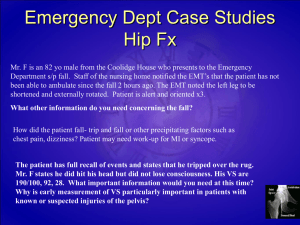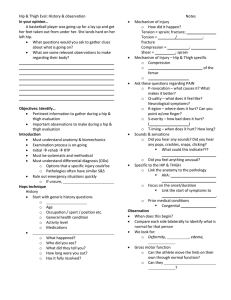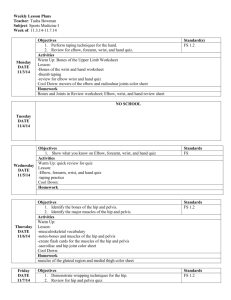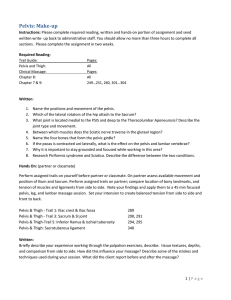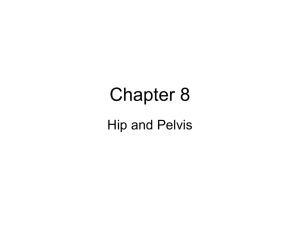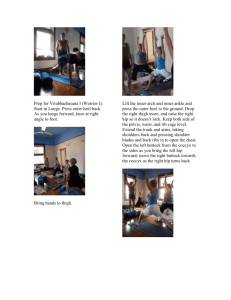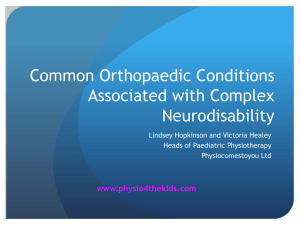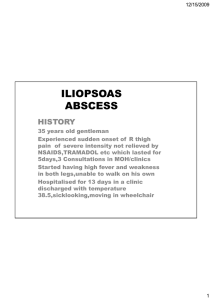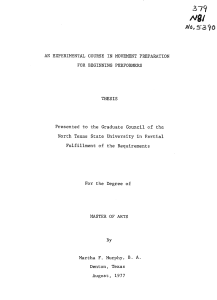Hip and Pelvis Review Info
advertisement
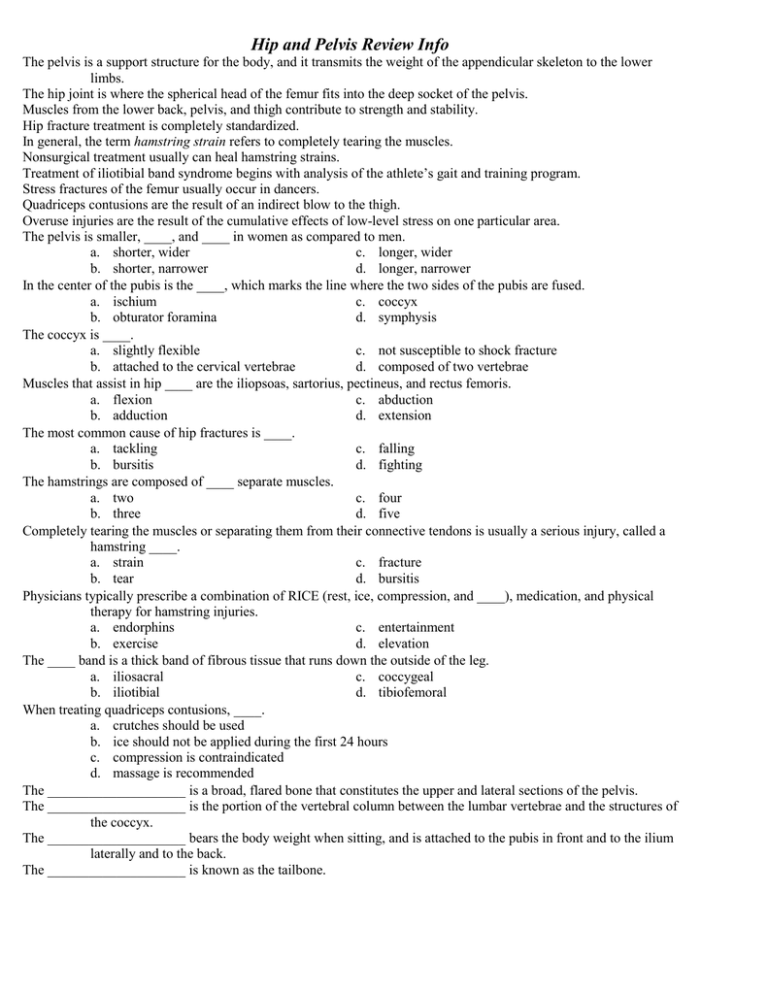
Hip and Pelvis Review Info The pelvis is a support structure for the body, and it transmits the weight of the appendicular skeleton to the lower limbs. The hip joint is where the spherical head of the femur fits into the deep socket of the pelvis. Muscles from the lower back, pelvis, and thigh contribute to strength and stability. Hip fracture treatment is completely standardized. In general, the term hamstring strain refers to completely tearing the muscles. Nonsurgical treatment usually can heal hamstring strains. Treatment of iliotibial band syndrome begins with analysis of the athlete’s gait and training program. Stress fractures of the femur usually occur in dancers. Quadriceps contusions are the result of an indirect blow to the thigh. Overuse injuries are the result of the cumulative effects of low-level stress on one particular area. The pelvis is smaller, ____, and ____ in women as compared to men. a. shorter, wider c. longer, wider b. shorter, narrower d. longer, narrower In the center of the pubis is the ____, which marks the line where the two sides of the pubis are fused. a. ischium c. coccyx b. obturator foramina d. symphysis The coccyx is ____. a. slightly flexible c. not susceptible to shock fracture b. attached to the cervical vertebrae d. composed of two vertebrae Muscles that assist in hip ____ are the iliopsoas, sartorius, pectineus, and rectus femoris. a. flexion c. abduction b. adduction d. extension The most common cause of hip fractures is ____. a. tackling c. falling b. bursitis d. fighting The hamstrings are composed of ____ separate muscles. a. two c. four b. three d. five Completely tearing the muscles or separating them from their connective tendons is usually a serious injury, called a hamstring ____. a. strain c. fracture b. tear d. bursitis Physicians typically prescribe a combination of RICE (rest, ice, compression, and ____), medication, and physical therapy for hamstring injuries. a. endorphins c. entertainment b. exercise d. elevation The ____ band is a thick band of fibrous tissue that runs down the outside of the leg. a. iliosacral c. coccygeal b. iliotibial d. tibiofemoral When treating quadriceps contusions, ____. a. crutches should be used b. ice should not be applied during the first 24 hours c. compression is contraindicated d. massage is recommended The ____________________ is a broad, flared bone that constitutes the upper and lateral sections of the pelvis. The ____________________ is the portion of the vertebral column between the lumbar vertebrae and the structures of the coccyx. The ____________________ bears the body weight when sitting, and is attached to the pubis in front and to the ilium laterally and to the back. The ____________________ is known as the tailbone. The muscle groups that compose the bulk of the thigh (quadriceps and ____________________) also assist in movement of the hip. Hip ____________________ strains may involve the rectus femoris and/or iliopsoas muscle. Typically, a(n) ____________________ strain is a grade I or II strain (mild or moderate) and is characterized by groin pain when running or kicking. ____________________ ossificans is a very painful condition in which an ossifying mass (calcium deposit) forms within the muscle. The iliac crest ____________________, or “hip pointer,” is a very painful injury caused by a direct blow to the hip. Stress fractures of the ____________________ occur most often in runners and dancers. Indicate the term identified by the following clues: 1. allows the sciatic nerve to pass to the legs below 2. marks the upper ridge of the ilium 3. broad, slightly concave inner surface of the ilium 4. strongest joint in the human body 5. large openings in the ischium on either side of the pelvis 6. flexes the trunk 7. flexes and rotates the thigh medially 8. extends and rotates the thigh laterally 9. abducts and rotates the thigh medially 10. adducts and extends the thigh
